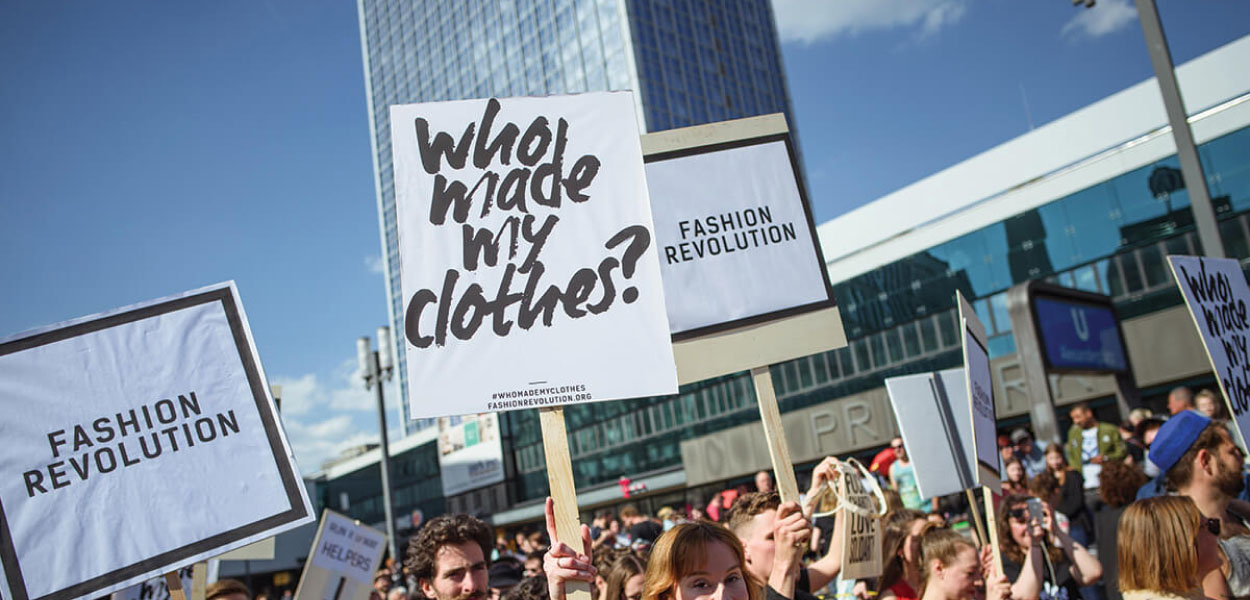Sustainable Choices: Why choose vintage clothing over fast fashion?
The fast fashion industry is one of the most harmful industries on the globe. The industry is driven by producing and selling low-cost, trendy clothing at a rapid pace. Typically, these garments are made from cheap and low-quality materials which are quickly discarded by consumers for the next trendy item.The Sustainable Consumer

In the last year, there has been a notable shift in consumer habits. The cost of living crisis along with the growing concern around sustainability & ethics of the fast fashion industry has influenced the consumer landscape worldwide. Big fast fashion retailers like ASOS have recorded a decline in sales in the past year. Alongside campaigns from anti-fast fashion and circular economy charities like Fashion Revolution and Ellen MacArthur Foundation, consumers are becoming more savvy at spotting greenwashing tactics.
Since 1986, ROKIT has stood by the statement: “Reduce waste, choose vintage.” We know that keeping clothes in circulation means we’re helping to reduce waste and inspiring change in an extremely wasteful industry. But even we need a refresher on the vintage clothing facts that remind us why we need to continue to be steadfast in anti-fast fashion!
The Impact of Fast Fashion

Credit: (left) Channel 4, Inside the Shein Machine: UNTOLD, 2022.
Fast fashion is known for its negative environmental & ethical impact, including:
1. Water pollution:
The production of textiles, particularly cotton and synthetic fibres, can lead to water pollution through the release of chemicals and dyes into rivers and other bodies of water.
The fast fashion industry contributes 20% of global water waste from textile dyeing.
2. Water scarcity:
The production of textiles can also lead to water scarcity, particularly in areas where water is already limited. This is because it takes a large amount of water to grow cotton, produce synthetic fibres, and dye textiles.
The fashion and textile industry uses an estimated 4% of all available fresh water worldwide. This is set to double by 2030.
3. Greenhouse gas emissions
The production of textiles, particularly synthetic fibres, can also lead to greenhouse gas emissions through the use of fossil fuels in the manufacturing process.
2% to 8% of the global carbon emissions is produced by the fast fashion industry.
4. Unethical workplace:
Fast Fashion companies are notorious in not respecting workers’ rights, from underpaying to providing bad working conditions.
93% of the fast fashion brands do not pay garment workers a Living Wage according to Fashion Checker.*
*This does not even account for all the other people in the supply chain before this point.
5. Over Consumption:
The culture of increased consumption can negatively affect your mental wellbeing. Fast Fashion has been a big proponent of negative body image through marketing unrealistic beauty ideals.
Why Shop Vintage Fashion?

Credit: Rokit Vintage, Denim Gang
Recycled fashion can be a more sustainable clothing option as it prolongs the life of existing garments, reducing the demand for new clothing to be produced. This can lead to:
1. Reducing textile waste:
As more people opt for vintage clothing, there is less demand for new clothing to be produced, which can help reduce textile waste.2. Reducing water use and pollution:
By choosing vintage clothing, individuals can reduce their impact on water use and pollution because the clothing has already been made and no new resources are required for its production.3. Reducing carbon footprint:
Opting for vintage clothing can also help reduce a person's carbon footprint because the manufacturing process of the clothing has already taken place and there is no need for further resources to be used.4. Better quality clothing:
As a general rule, clothing from the last century is of higher quality. A lot of vintage designs from the previous century are made from natural materials like wool and cotton which have a longer lifespan than synthetic materials like polyester. The construction of clothing from this century put durability first too. Our Vintage Denim Collection is a great example of this.5. Supporting local economy:
Shopping for vintage clothing allows consumers to support the local economy by buying from independent vintage shops like us.6. A renewed love of clothes:
Buying vintage clothing is an act of slow fashion. When buying vintage or secondhand, we become more conscious of the quality of the materials and durability. Which is great! Take our Vintage Knitwear Collection for example - we know the question of quality vintage knit is important to our customers which is why we quality check and launder every piece of knitwear before it's sent out to you.
Vintage fashion can also inspire more creativity and development of personal style rather than opting for fast moving trends.
A Sustainable Choice
Of course, vintage clothing may be the more sustainable alternative but this does not mean that it is without its own set of environmental challenges.
At ROKIT are constantly holding ourselves accountable and strive to find the most effective ways to reduce waste and pollution where possible. For example, we are committed to upcycled fashion with our Rokit Originals collection. We are also committed to sourcing electric vehicles to transport clothing from our North London warehouse to our four London-wide stores.
As consumers we can also make more sustainable choices and learn how to avoid fast fashion. Whether that’s through learning key skills of repairing your clothes, practising conscious and sustainable shopping, and choosing quality clothing that will last.
Blog references:
Has Fast Fashion Lost Its Appeal?, Charged Retail
Textile Industry Responsible for 20% of Global Water Pollution, DNB
The Textile Industry Must Innovate to Prevent Water Scarcity, PCIAW
About Us, Fashion Checker

